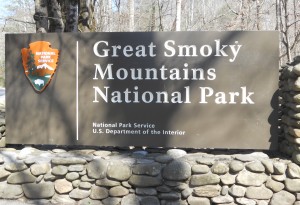Declining Air Quality in the Great Smoky Mountains
By Kerri C. Weatherly
Burning fossil fuels in the Tennessee, Ohio and Mississippi valleys convert into harmful secondary pollutants that are carried by wind into southern Appalachia.
Research and observation of air quality in the Great Smoky Mountains National Park over the past few decades shows that air pollution is affecting the purity of streams, soils, plant life, visual clarity, tourist satisfaction and community wellness, according to Jim Renfro, Air Quality Specialist at the Great Smoky Mountains National Park.
Industrial regions in Tennessee, Ohio and Mississippi produce pollution that is carried eastward into the Great Smoky Mountains National Park.
Dozens of plant varieties show physical damage from ozone pollution — according to the Great Smoky Mountains National Park Management Folio in 2007, 90% of Black cherry trees and tall milkweed plants in multiple park locations show foliar symptoms of ozone damage. Other plants that show signs of ozone damage are tulip tree, sassafrass, winged-sumac, blackberry and cutleaf coneflower.
Visual clarity on a typical day averages about 15 miles, which is significantly less than normal conditions — about 77 miles. High levels of sulfur and nitrogen pollution contribute to acid rain and stream acidity — this causes foliar damage to plants and strips soil of its nutrients, according to a Briefing Statement in 2010 by the National Parks Service. High levels of mercury pollute streams and are proving very harmful to birds, fish and other wildlife.
The Great Smoky Mountains National Park acquires the most sulfur and nitrogen pollution of any monitored national park. Ozone exposures in the park are amidst the highest in the east and have surpassed levels that threaten human health on over 300 days since 1990, according to the 2010 Briefing Statement. On average, ozone levels over the ridge-tops of the park can be twice as much as nearby cities, including Knoxville, Tenn., and Atlanta, Ga.




Leave a Reply